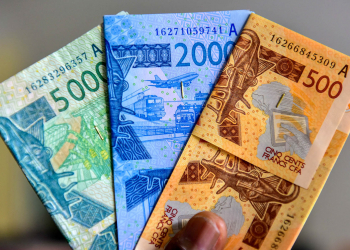Talented Photographer Ilan Godfrey, in a photoseries called “For Legacy of the Mine”,explores the human cost South Africa’s monolithic mining industry, tracing the threads of exploitation and oppression that run through the country’s lucrative mineral trade.
Pivotal in the nation’s emergence as a global industrial leader, the diamond, coal, and gold mines carry with them a grim history of environmental devastation and personal suffering. In exchange for barely livable wages, which are determined by the amount of mineral extracted, work in the mines carries with it the threat of fatal diseases like tuberculosis, silicosis, asbestosis, and radiation.
Under the instruction of Zimbabwean “Kingpins,” illegal miners make their descent into the mines for months at a time, in danger of injured or killed by unstable shafts. In the surrounding areas, households are plagued by ailments brought on by air and water pollution.
In his portrait of the mines, Godfrey merges the iconic with the everyday, presenting neighborhood children playing alongside makeshift graveyards commemorating the victims of police violence and conflict in the mines. Here, the troubled history of the mine continues to color every facet of life both private and political, casting its influence over an uncertain national—and global— future. We spoke to Godfrey about the project.
“The series Legacy of the Mine unfolded after my attention was drawn a number of years earlier to the environmental implications and historical and current social aspects of the gold mining industry in and around Johannesburg. This was also supported with the fact that I had grown up in these surroundings and felt a longing to explore them further.



“It became clear as the project progressed that my subjects did not always directly reflect the legacy of mining-based pollution; rather, the concept of ‘the mine’ became a thread that helped me frame my work. I was originally drawn to the way in which mining had revealed the impact of its legacy on the environment, but my experiences soon revealed something deeper.
“‘The mine’, irrespective of the particular minerals extracted, is central in understanding societal change across the country and evidently comparable to mining concerns around the world. This enabled me to channel my conception of ‘the mine’ into visual representations that gave agency to these forgotten communities”
“The law is playing a pivotal role in representing the voiceless when going up against the might of the mine. For example in December 2012, Richard Spoor, a South African activist and human rights attorney, filed a class action against 30 gold mining companies on behalf of tens of thousands of mineworkers who have contracted silicosis. It is estimated that one in four gold miners in South Africa suffers from silicosis.
“The platinum industry in the North West has been fraught with controversy of late, as the labour unrest at Marikana attests, with the longest labour strike in the history of South Africa coming to an end earlier this year. Not only does Marikana focus attention on the need to restructure the cheap labour migrant system but it has also highlighted the ongoing health risks miners face during employment and the meagre compensational benefits awarded to them once employment has ended. Wildcat strikes, invariably the desperate measures of miners simply wanting to improve their wages and living conditions, are nothing new in South Africa.”
All images © Ilan Godfrey
Prominent Ghanaian Leaders and Clergy Honor Late Apostle Dr. Michael Kwabena Ntumy at State House Funeral
In a poignant ceremony held on Saturday, February 24, 2024, at the Forecourt of the State House, hundreds of mourners...




